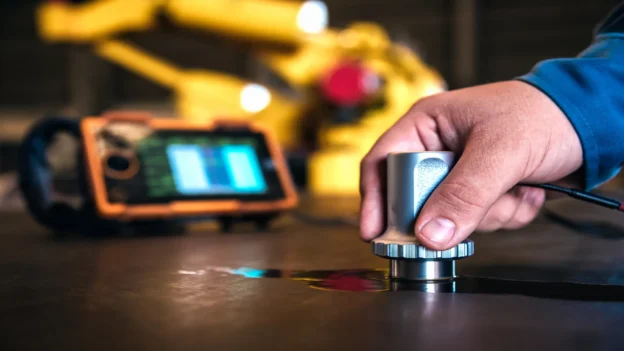Integrity inspection and reliability prediction of critical assets in the oil and gas industry are key priorities for oil and gas operators. Among the degradation problems affecting these facilities, environmental corrosion, hydrogen-induced damage and stress-related cracks in steels are particularly serious.
Corrosion is a naturally occurring phenomenon, commonly defined as the deterioration of a material—typically a metal—those results from a chemical or electrochemical reaction with its environment. Environmental corrosion cracking results from the combined action of three factors: a susceptible material, a corrosive environment, and tensile stress. Stresses causing environmental cracking can arise from residual cold work, welding, grinding, thermal treatment, or may be externally applied during service.
To cause damage, these stresses must be tensile. Environmental cracking specifically refers to corrosion cracking triggered by a combination of conditions that can lead to various forms of corrosion damage, such as Stress Corrosion Cracking (SCC), Corrosion Fatigue, or Hydrogen Embrittlement. Consequently, the integrity inspection and reliability prediction of steel assets in the oil and gas industry are high priorities. Some of the most challenging defects include environmental corrosion cracking, such as Chloride Stress Corrosion Cracking (Cl-SCC), Hydrogen Induced Cracking (HIC), associated Stepwise Cracking (SwC), and various forms of Stress Corrosion Cracking (SCC).
These damage mechanisms are difficult to detect, especially in their early stages, and require specialized advanced NDT technologies operated by skilled NDT technicians and engineers. This is particularly important for large-scale inspection surveys that require a thorough focus on data analysis to detect the presence of these critical damage mechanisms.
In general, NDT can be used on any test object to measure wall thickness, identify metal loss, detect welding defects, and identify anomalies. Compared with conventional NDT, advanced NDT technologies provide quicker results, a permanent record, and improved inspection accuracy. Several nondestructive testing techniques are available for identifying HIC, SwC, and SCC. The objectives of using cutting-edge advanced NDT technologies include enhancing personnel safety, proactively preventing failures, improving plant integrity, identifying damage mechanism locations, and developing strategic plans for replacement and budgeting.
Advanced nondestructive testing (ANDT) comprises a wide range of innovative techniques to inspect and analyze anomalies in assets with minimal disruption to operations. Therefore, advanced nondestructive technologies (ANDT) with suitable techniques are used to inspect and detect these critical defects, enabling engineers to conduct assessments and evaluations.
Fortunately, several techniques, which will be discussed in subsequent sections, allow for reliable inspection. Among the most reliable are Automated Advanced Ultrasonic Testing, Eddy Current Array, Phased Array techniques, and Time-of-Flight Diffraction. Advanced NDT technologies, such as the Phased Array Technique (PA), can provide snapshot images of defects, helping to verify any possible linkages between blisters or stepwise cracking. Similarly, Automated Advanced Ultrasonic Scanning (AUT) is another technique that enables the inspection of large areas and is readily able to detect major defects such as blistering, multi-depth inclusions, and laminations, as well as provide a closer examination of suspect areas to monitor the development of stepwise cracks.
In conclusion, advanced NDT technologies provide valuable information on the location, geometric features, and growth of environmental corrosion cracking. These techniques have produced excellent results, as proven through metallurgical analysis, and are invaluable for monitoring corrosion cracks. The data obtained supports engineering evaluations, fitness-for-service studies, extends the life of plant equipment and piping, supports planning for repairs and replacements, and ensures safe operations.
This article was developed by specialist Mohammed A. Abufour and published as part of the fourth edition of the Inspenet Brief magazine December 2024, dedicated to technical content in the energy and industrial sector.

